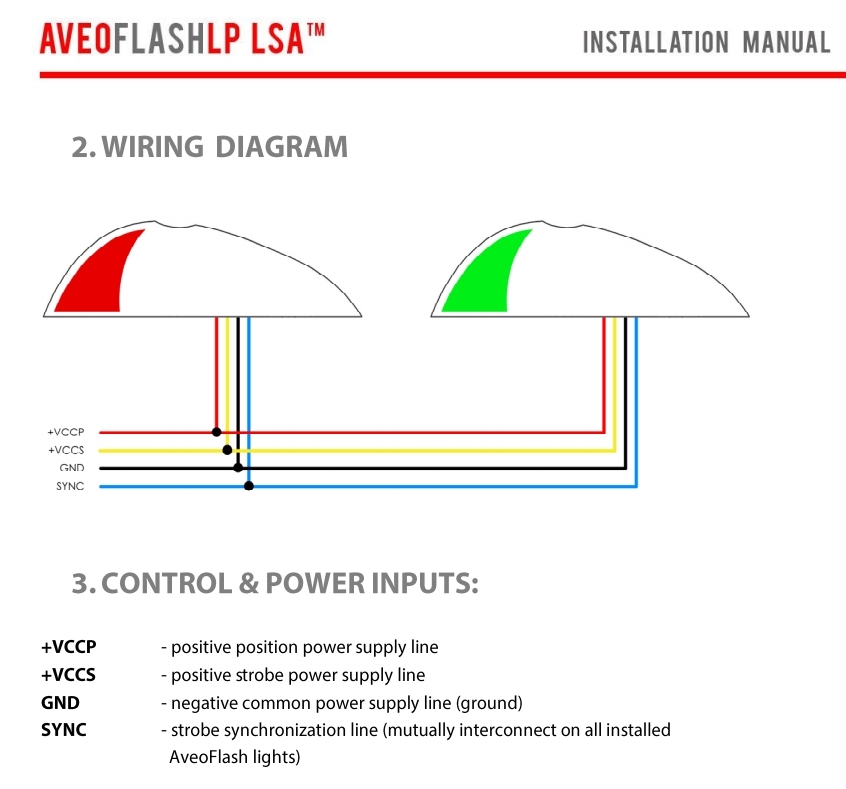You may want to consider the voltage drop in it if you have lights that draw a few amps. Ohm’s law, etc. However this issue is not big nowadays. My LED lamps draw 1.5A each (24V).
That 4 conductor tefzel wire doesn’t cost much, $0.86 per feet. I need about 20 feet.
I would shield everything, to give VHF comms the best chance of working in the presence of the various switch mode power supplies.
In a non radio aircraft it of course doesn’t matter.
Troubleshooting interference after the job is done is a huge task.
The weight of the wire is irrelevant.
If one used the shield for the DC return then one must not ground it to the airframe otherwise unless one is very careful some of the ground current will instead flow through the airframe and then you create a magnetic loop which will bugger up the compasses.
Myself would begin by trying non-shielded cable, saving both cost and weight. Or, if it must be shielded, use the shield for the ground connection to that 3 conductors do the job – still saving some cost and weight. Then again, I would not use the tefzel stuff anyway, but that is up to the builder to decide.
That looks good.
Where the shield is grounded doesn’t matter because it’s not carrying any current. You are not using it for the DC ground. I would ground it to the airframe at both ends. It’s only purpose is to prevent radiation of any interference which gets conducted into the wires inside the cable. For example typical aircraft LED lamps use a switching power supply inside and that will generate interference which will be conducted into the wires feeding the lamp.
OK. This is all the installation info that comes with my LED lights (nav, position, strobes). To connect this I simply use a 4 conductor wire like this ? Then I ground the shield only at one place, at the main bus in the cockpit compartment for instance?

How exactly should things like that be done? Ground is minus on the battery. Should there be a separate minus wire to the lights? And if shielded, should the shield be grounded, and where?
If you don’t want to create a magnetic field, you need to achieve a zero area for the “loop” which is formed by the supply and return wires. So those two wires need to run right next to each other. So, yes, don’t use the airframe for the return as is usually done for e.g. the starter motor. Run a wire for it. Use a standard 2-core avionics cable.
You don’t need to shield a cable which carries just DC e.g. powering a lamp or an LED. The shield won’t do anything (unless there is some other, more obscure, reason for the shielding e.g. the power supply is a switching power supply and all of those radiate some RF). But wires powering strobes don’t carry DC. They carry all kinds of rapidly changing muck – even if they drive an LED “strobe light”.
2greens1red wrote:
Wing tip makes a lot of sense for the magnetometer, but, as I mentioned, strobes would make it useless.
Why? That’s a common place for a magnetometer.
How exactly should things like that be done? Ground is minus on the battery. Should there be a separate minus wire to the lights? And if shielded, should the shield be grounded, and where?
What affects the fluxgate is a magnetic field, and if an electric current flows there and back via two wires which are close to each other (e.g. a twisted pair) then it should cancel out. What you obviously must not do is use the airframe as a return wire, etc.
Same goes for anything else electrical on the wingtip.
That said, on my plane the strobe wires are really well routed, inside the training edge of the wing, and done with a shielded cable, but that is for radio interference reasons (the strobe inverter is often heard of peoples’ radios) rather than to cancel any residual mag field which cable shielding (copper) won’t do anyway.